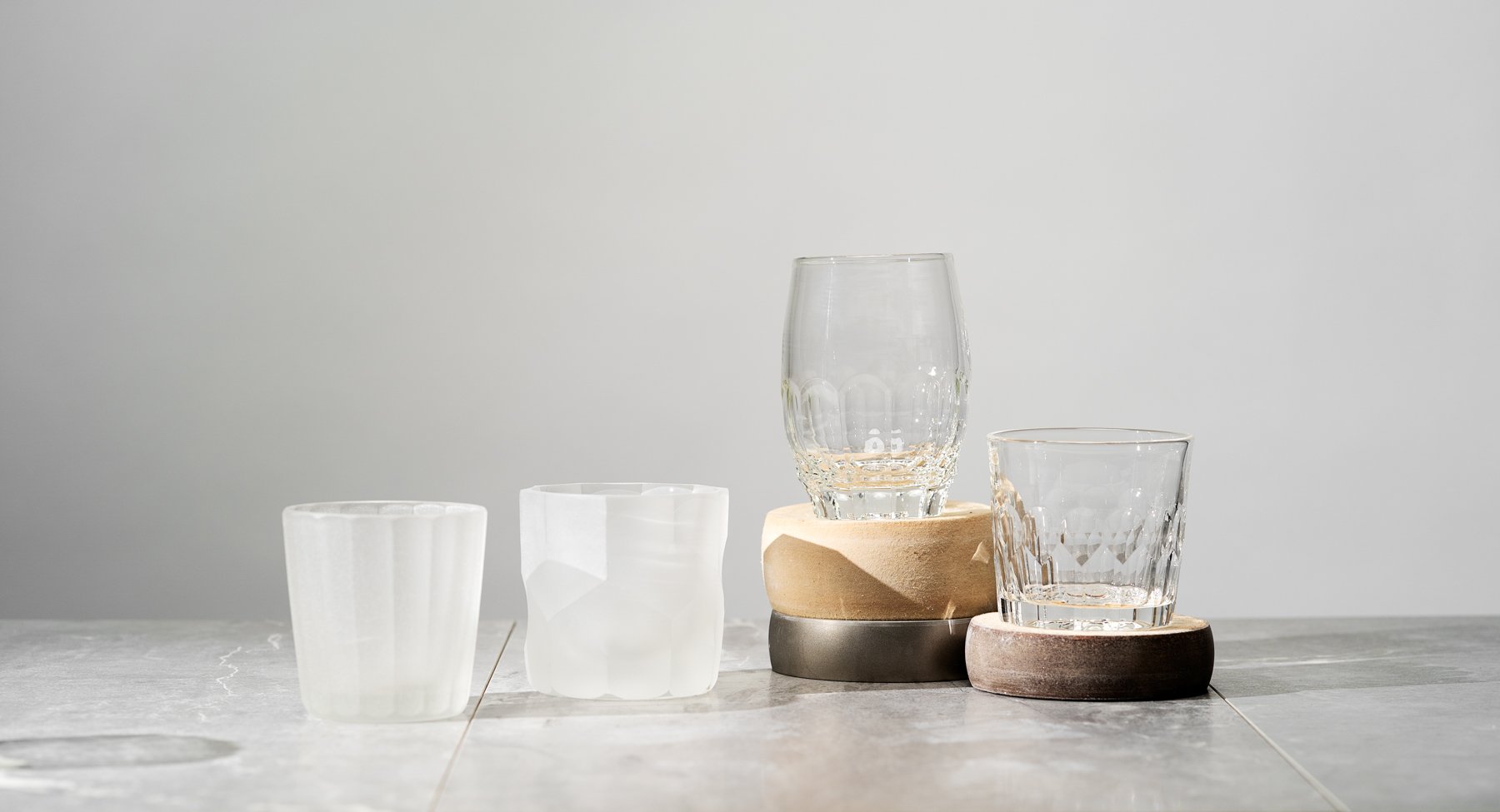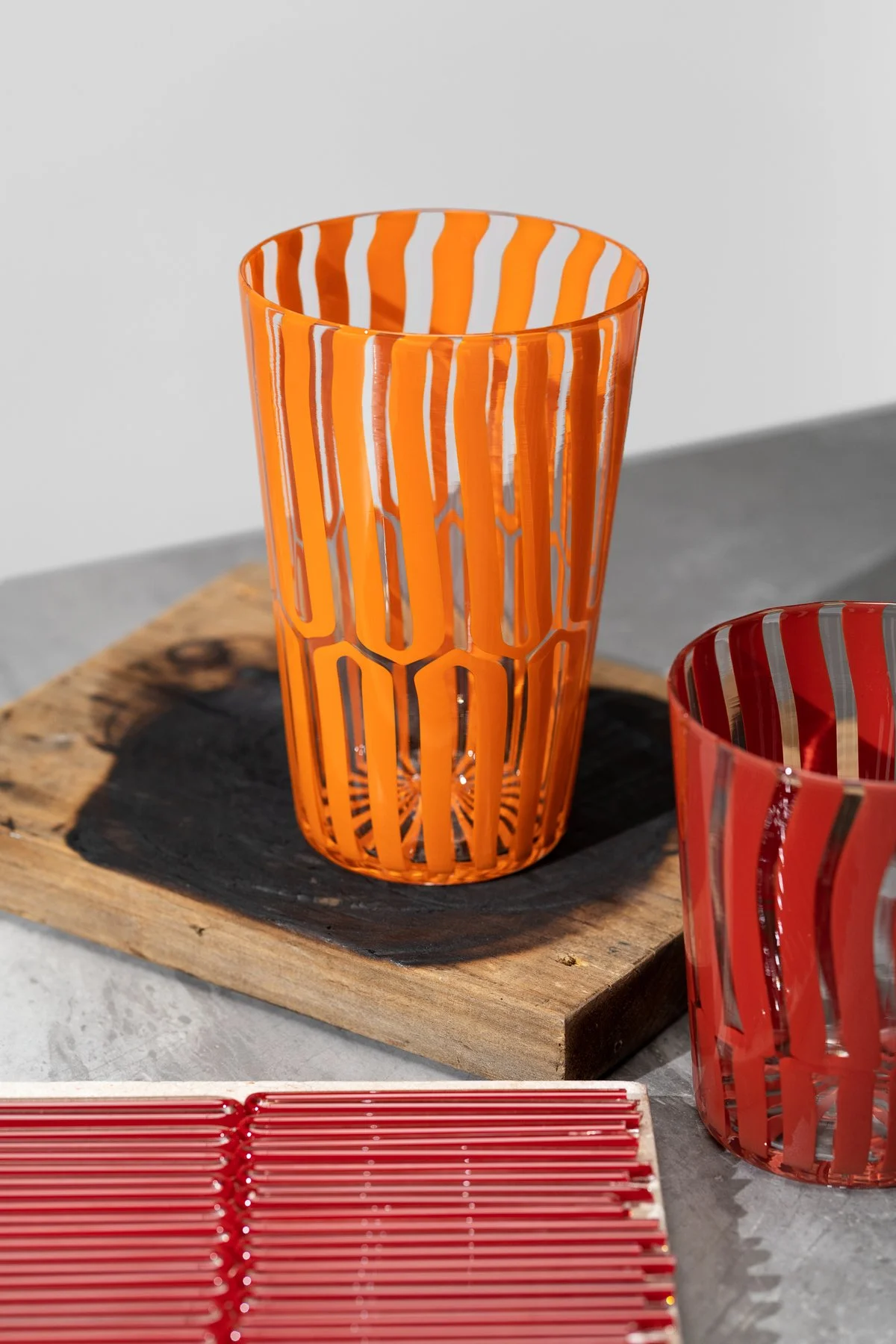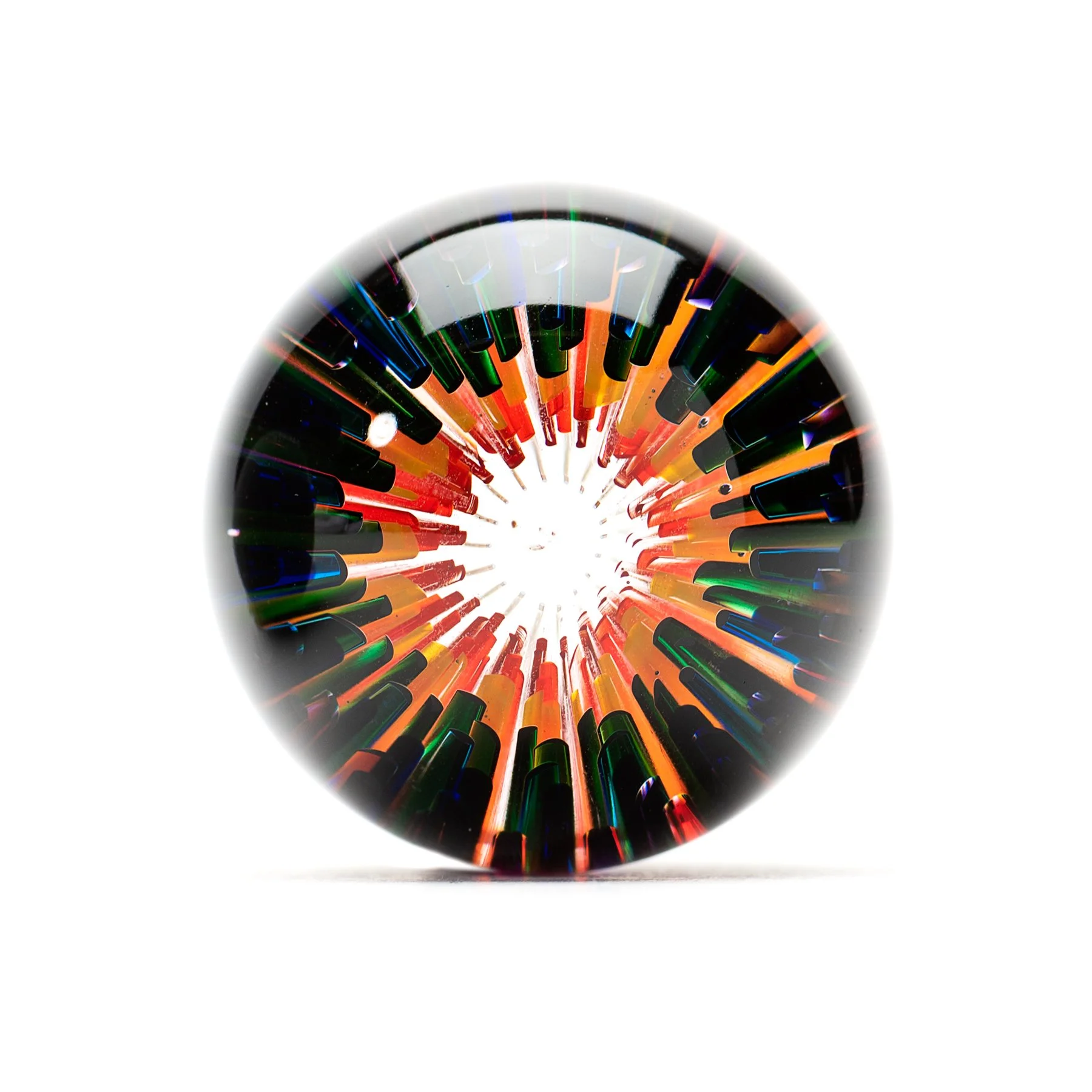Image: Chad Weeden
In glass making there are both hot glass processes and cold glass processes.
Hot glass starts with the melting of the glass and includes every maneuver to gather and form molten glass. Cold glass, which is called cold working, includes any cutting, grinding, polishing or etching of the cold material. The work I make is rooted in these two parts; there is the hot and then the cold. But sometimes it’s more complicated. Some pieces are formed hot, cold worked, then worked hot again. More complicated processes require repeated hot & cold steps to finish the work.

HOT GLASS
The things I like to make are based on simple and functional forms.
I focus on small objects like cups and kitchen bowls. Things I intend to be used and enjoyed everyday. I love to make these things with vibrant and complex cane work patterns.

COLD GLASS
When glass is cold it can be precisely cut and ground using a variety of abrasives including diamond and silicon carbide.
Though it is the less glamorous side of glass making, cold work is an important facet of the whole process, especially in finishing a piece. A part of cold work that I love is that cold working is a way to make glass by reduction. A careful way to remove glass until a finished form is achieved. In this direction I make marbles. Perfectly round spheres, ground into shape from rough hewn lumps of glass using simple hand grinding methods which are then smoothed and polished to a glossy finish. I make other little objects too but marbles are my favorite.
Images by Loam







